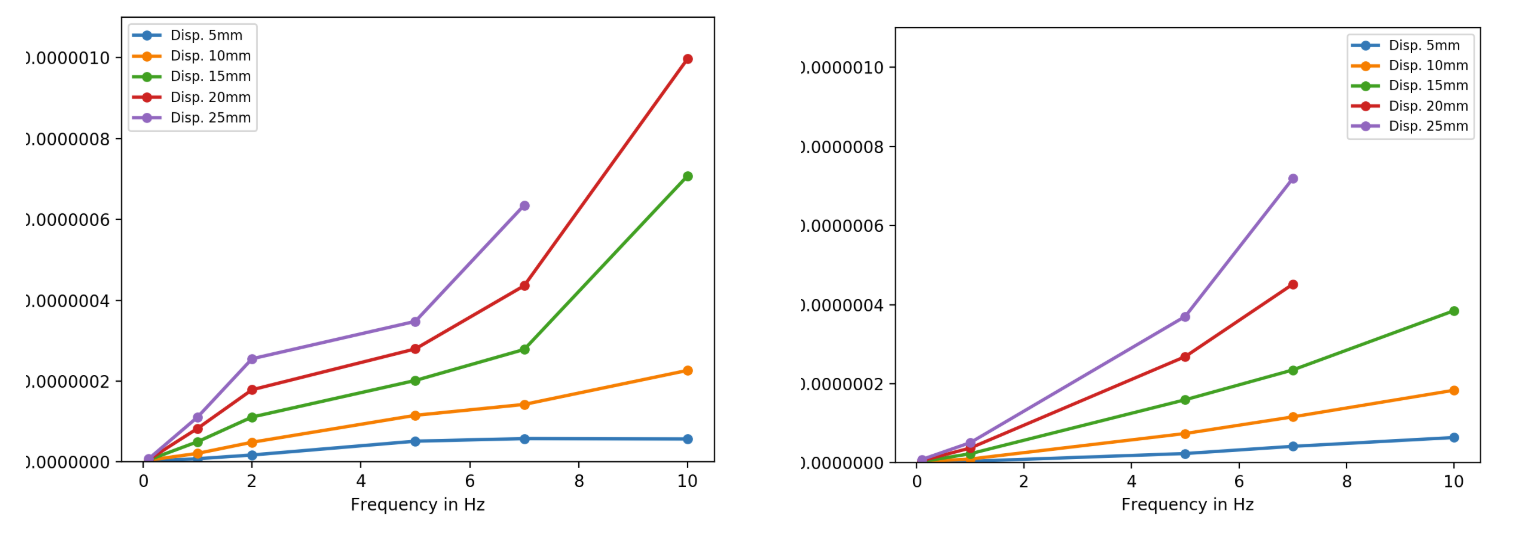Sensor Characterization in terms of Electrical Output ( Open - Circuit Voltage, Short - Circuit Current and Output Power) through Longitudinal Displacement
Experiment Setup:
We carried out experiments to characterize our sensing interface’s electrical output in terms of short circuit current (Isc) current, open circuit voltage (Voc) and electrical power for various input frequencies and longitudinal displacement (stretch). First, customized plastic brackets were constructed to hold the sensing interface between the linear motor and Newport 462-XYZ-M Linear Stage. Afterwards, the sensing interface was aligned parallel to the ground and, firmly fixed in a straight line between the laboratory equipment. The acceleration, deceleration and displacement of linear motor arm were controlled through computer to simulate different frequencies and longitudinal displacements of interaction. The electrical output from the interface was measured through Keithley electrometer. The procedure was carried out for two sensors with different stiffness. The following results were obtained:
Observation: Open Circuit Voltage
On the one hand two different interfaces show some similarities in open circuit voltage: 1. Over the given range of frequencies, open circuit voltage is observed to almost remain unchanged at 5 mm displacement, and 2. With increasing displacement, open circuit voltage shows approximate linear relationship with frequency, but this linear trend is noticeably broken at high displacement of 20 mm and 25 mm. On the other hand, there are prominent differences in the electrical response to frequency and displacement of interactions. For all displacements and frequencies the softer interface generates greater open circuit voltage as compared to the stiffer the alternative. This indicates that the softer interface is more sensitive to stretching interaction. Furthermore, the approximate linear relation between voltage and frequency depicts steeper slope for the softer interface, which suggests that for the tested displacements, sensitivity of the soft interface to frequency, improves with increase in displacement.

Observation: Short Circuit Current
For a given frequency, the short circuit current increases with increase in the displacement. At a given displacement the short circuit current increases almost linearly with increase in frequency up to 5Hz, before the current departs from the linear trend and begins to increase sharply. This trend implies that electric output in terms of short circuit current is highly sensitive to the frequency of interaction for longitudinal displacements of 20 mm and 25 mm.
Experimental setup for sensor characterization through linear motor, with variable frequencies and variable strain values can be seen in the following videos.
Observation : Electrical Power
Increase in both frequency and strain cause an increase in the output power measured. The power grows exponentially with increase in frequency for any given strain value. This sensitivity towards frequency increases as the strain increases. Therefore, industrial uses where there exists high frequency and high strain environments such as in car-suspensions, and vibrating machinery provide promising use cases for future applications.
 fereshteh
fereshteh
Discussions
Become a Hackaday.io Member
Create an account to leave a comment. Already have an account? Log In.